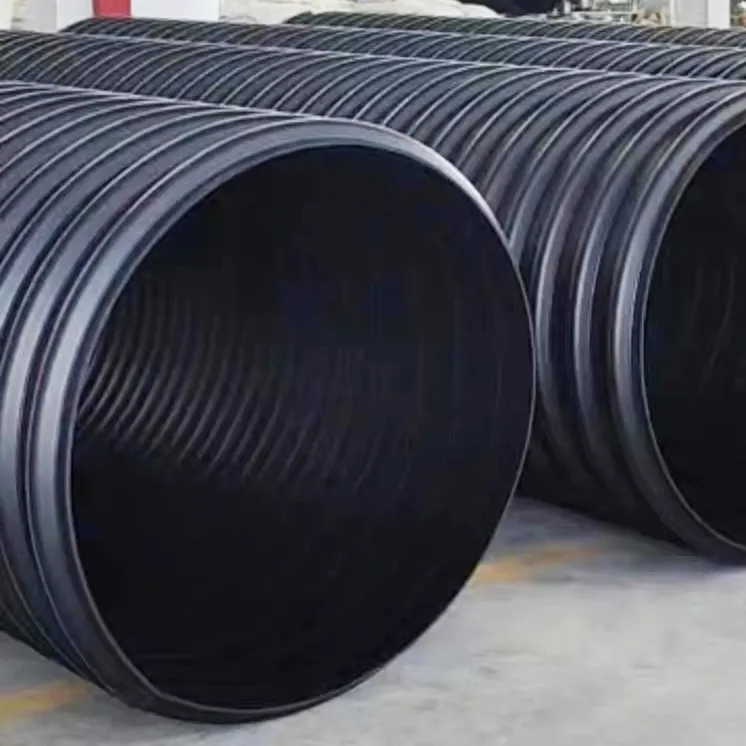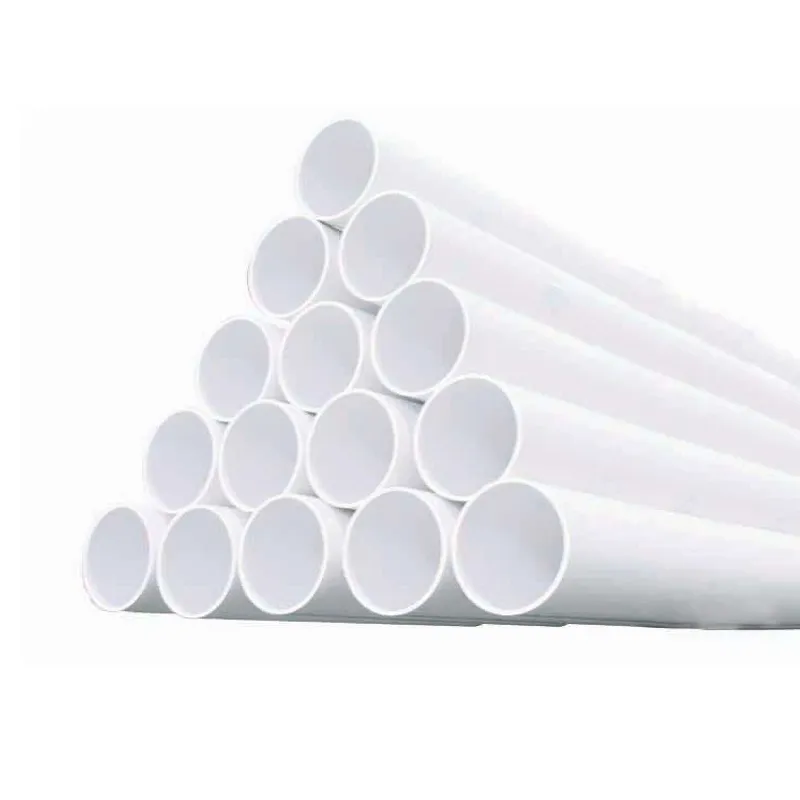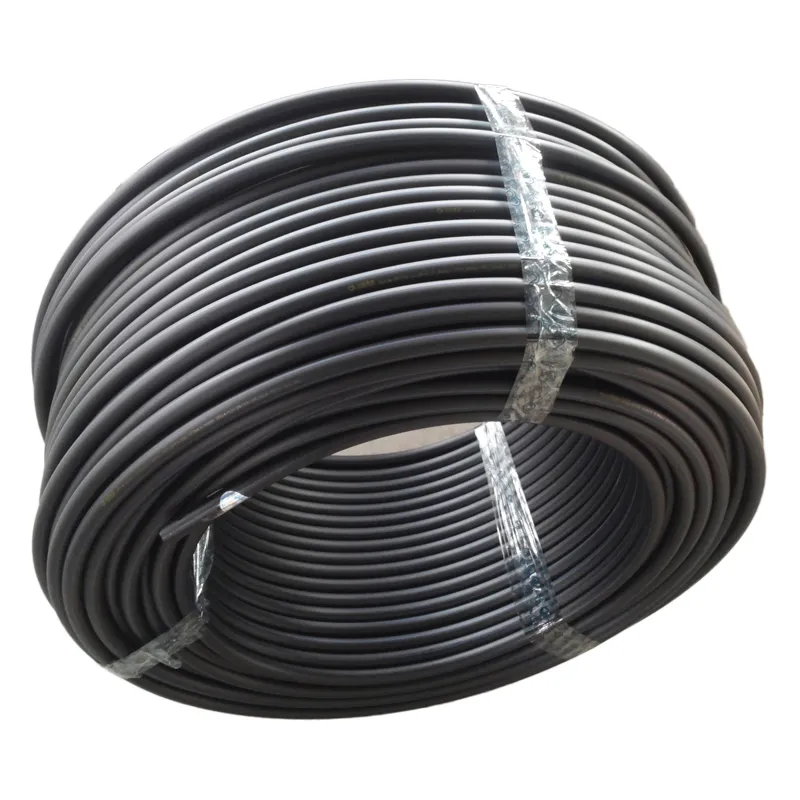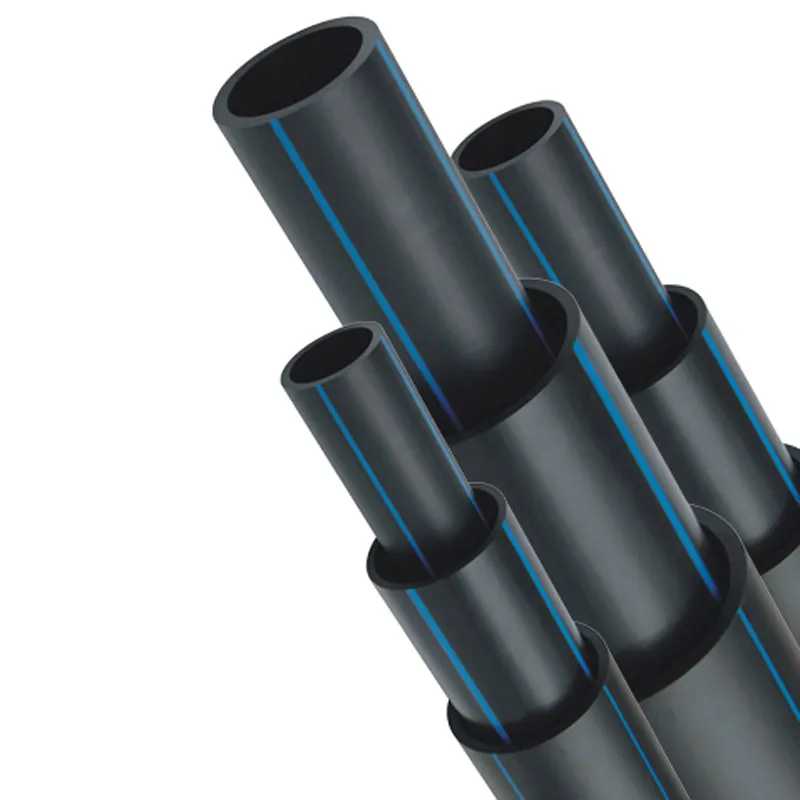Inspection chambers play a vital role in ensuring the proper functioning of drainage systems. They provide access to the system for inspection, maintenance, and repairs. However, the design, installation, and maintenance of drainage inspection chambers can be complex, and failure to do so properly can result in blockages, leaks, and other problems. In this article, we will provide a comprehensive guide to inspection chambers, including their purpose, types, materials, and maintenance, to help you ensure the safety and functionality of your drainage system.
Table of Contents
1. What is a drainage inspection chamber, and what is its purpose in a drainage system?
1. What is an inspection chamber, and what is its purpose in a drainage system?
An inspection chamber, also known as a manhole or access chamber, is a component of a drainage system that allows access to the pipes for inspection, maintenance, and cleaning purposes. It is usually a chamber or structure that is built at strategic points along the drainage network, where the pipes change direction, or where there is a change in gradient. The primary purpose of a drainage inspection chamber is to provide a point of access for maintenance personnel to inspect and maintain the pipes, identify and fix blockages or other issues, and ensure the overall performance and reliability of the drainage system. Additionally, drainage inspection chambers also allow for the connection of new pipes or changes to the existing system, making them an essential component of a well-designed drainage system.
2. Where is the inspection chamber located in a drainage system, and how many inspection chambers are typically needed?
The location of drainage inspection chambers in a drainage system depends on the specific layout and design of the system. However, in general, inspection chambers are located at strategic points along the drainage network, such as where there are changes in direction or gradient, or where multiple pipes converge.
The number of drainage inspection chambers needed in a drainage system also depends on the system's layout and design. In general, the larger the drainage system, the more inspection chambers are needed to ensure proper maintenance and access to the pipes. A typical drainage system may have several drainage inspection chambers, usually spaced at intervals of 30 meters to 50 meters, depending on the local regulations and standards. However, the number and spacing of drainage inspection chambers may vary based on factors such as the system's size, complexity, and environmental conditions.
3. What are the different types of drainage inspection chambers, and how do they differ in design and functionality?
There are several types of drainage inspection chambers available, and they differ in design and functionality. Here are some common types:
1. Brick Inspection Chamber: Brick drainage inspection chambers are constructed using bricks and concrete, and they are a traditional type of chamber that is commonly used in older buildings. They are durable and can withstand high loads but require regular maintenance.
2. Plastic Inspection Chamber: Plastic drainage inspection chambers are made of polypropylene or polyethylene, and they are lightweight, easy to install, and require minimal maintenance. They are ideal for small to medium-sized drainage systems.
3. Precast Concrete Inspection Chamber: Precast concrete drainage inspection chambers are manufactured in a factory and are delivered to the site for installation. They are durable and can withstand high loads, making them ideal for large drainage systems.
4. Fiberglass Reinforced Plastic (FRP) drainage Inspection Chamber: FRP drainage inspection chambers are made of composite materials that are resistant to chemicals, corrosion, and fire. They are durable and require minimal maintenance, making them ideal for harsh environmental conditions.
5. Cast Iron Inspection Chamber: Cast iron drainage inspection chambers are strong, durable, and resistant to fire. They are commonly used in older buildings but are less common in modern drainage systems due to their weight and high cost.
6. Shallow Inspection Chamber: Shallow drainage inspection chambers are designed for use in areas with limited space or shallow drainage systems. They are smaller in size and depth and require less excavation during installation.
7. Deep Inspection Chamber: Deep drainage inspection chambers are designed for use in areas with deep drainage systems, and they are larger in size and depth than shallow chambers. They require more excavation during installation and are typically used in large or complex drainage systems.
These are some common types of drainage inspection chambers, and the choice of the right type of chamber depends on the specific requirements of the drainage system, including load-bearing capacity, access requirements, and environmental conditions.
4. What materials are used to construct drainage inspection chambers, and how do they affect the durability and performance of the chamber?
The materials used to construct drainage inspection chambers affect the durability and performance of the chamber. Here are some common materials used:
1. Concrete: Concrete is a strong and durable material that can withstand high loads and pressure. It is commonly used in larger drainage inspection chambers or where heavy traffic loads are expected.
2. Brick: Brick is a traditional material that is still used in some drainage inspection chambers. It is durable and resistant to corrosion but requires regular maintenance to prevent cracking or deterioration.
3. Plastic: Plastic is a lightweight and durable material that is easy to install and requires minimal maintenance. It is ideal for small to medium-sized drainage systems.
4. Fiberglass Reinforced Plastic (FRP): FRP is a composite material that is resistant to corrosion, chemicals, and fire. It is lightweight and durable and requires minimal maintenance. It is ideal for harsh environmental conditions.
5. Cast Iron: Cast iron is a strong and durable material that is resistant to fire. It is commonly used in older buildings but is less common in modern drainage systems due to its weight and high cost.
The choice of material depends on the specific requirements of the drainage system, including load-bearing capacity, access requirements, and environmental conditions. The material used should be durable and resistant to corrosion, chemicals, and fire, as well as being able to withstand the loads and pressure expected in the drainage system. Proper installation and regular maintenance are also essential to ensure the chamber's long-term durability and performance.
5. What factors should be considered when selecting a drainage inspection chamber, such as load-bearing capacity, access requirements, and environmental conditions?
Several factors should be considered when selecting a drainage inspection chamber for a drainage system. These factors include:
1. Load-bearing capacity: The drainage inspection chamber must be able to withstand the weight of the soil and any loads that may be placed on it, such as traffic loads or heavy machinery.
2. Access requirements: The chamber should provide easy and safe access for maintenance and cleaning. It should also be designed to allow for inspection and repair of the pipes without the need for excavation.
3. Environmental conditions: The chamber should be able to withstand the effects of the environment, such as corrosive chemicals or extreme temperatures. For example, in areas with acidic soil or corrosive groundwater, a material that is resistant to corrosion should be used.
4. Size and depth: The size and depth of the drainage inspection chamber should be appropriate for the size and layout of the drainage system. Shallow drainage inspection chambers are suitable for areas with limited space or shallow drainage systems, while deeper chambers are used in areas with deep drainage systems.
5. Regulations and standards: The drainage inspection chamber must comply with local regulations and standards. For example, the chamber may need to be a certain size or depth or made from a particular material.
6. Future expansion: Consideration should be given to future expansion or modifications to the drainage system. The drainage inspection chamber should be designed to allow for easy connection to additional pipes or chambers if required.
By considering these factors when selecting a drainage inspection chamber, it is possible to ensure that the chamber meets the specific requirements of the drainage system and provides safe and easy access for maintenance and cleaning.
6. What are the common problems associated with drainage inspection chambers, such as blockages, leaks, or damage, and how are they typically resolved?
There are several common problems associated with drainage inspection chambers in drainage systems, including blockages, leaks, and damage. Here are some of the most common problems and how they are typically resolved:
1. Blockages: Blockages in drainage inspection chambers are often caused by the build-up of debris, such as leaves, grease, or sediment. Blockages can be resolved by removing the debris manually or by using high-pressure water jetting equipment to clear the blockage.
2. Leaks: Leaks in drainage inspection chambers can be caused by cracks in the chamber or damaged seals around the pipes. Leaks can be resolved by repairing or replacing the damaged section of the chamber or by replacing the seal around the pipe.
3. Damage: drainage Inspection chambers can become damaged due to soil movement, root infiltration, or impact damage. Damage can be resolved by repairing or replacing the damaged section of the chamber.
4. Corrosion: drainage Inspection chambers made from materials such as metal or brick can become corroded over time, leading to structural damage. Corrosion can be resolved by repairing or replacing the affected section of the chamber.
5. Poor installation: drainage Inspection chambers that are not installed correctly can lead to problems such as water infiltration or instability. Poor installation can be resolved by correcting the installation method and ensuring that the chamber is properly supported and sealed.
It is important to regularly inspect and maintain drainage inspection chambers to prevent problems from occurring and to ensure that they continue to function correctly. Regular cleaning and inspection can also help identify any potential problems before they become more serious.
7. How frequently should drainage inspection chambers be inspected and maintained, and what are the best practices for doing so?
The frequency of inspection and maintenance of drainage inspection chambers in a drainage system depends on several factors, such as the size and complexity of the system, the material used for the chamber, and the environmental conditions.
In general, it is recommended that drainage inspection chambers should be inspected and maintained on a regular basis, typically once or twice a year. However, if the drainage system is located in an area that is prone to heavy rainfall, flooding, or high levels of debris, more frequent inspections may be required.
The following are some best practices for inspecting and maintaining drainage inspection chambers:
1. Visual inspection: Regularly inspect the drainage inspection chambers visually to identify any visible signs of damage, corrosion, or blockages. This can be done by removing the cover of the chamber and examining the interior.
2. Cleaning: Regular cleaning of the drainage inspection chamber is important to remove debris and prevent blockages. This can be done by removing any debris by hand or by using high-pressure water jetting equipment.
3. Structural integrity: Inspect the structural integrity of the chamber, such as the walls and the cover, to ensure that they are sound and not cracked.
4. Sealing: Inspect the seals around the pipes and between the chamber walls and cover to ensure that they are intact and not damaged.
5. Testing: If possible, perform tests on the pipes connected to the drainage inspection chamber, such as smoke testing, to identify any leaks or blockages.
6. Record-keeping: Keep records of inspections and maintenance performed on the drainage inspection chamber. This can be helpful in identifying any trends or recurring issues.
By following these best practices, it is possible to ensure that drainage inspection chambers in a drainage system are functioning correctly and to identify and resolve any potential problems before they become more serious.
8. What regulations and standards apply to drainage inspection chambers, and how can compliance be ensured?
The design, installation, and maintenance of drainage inspection chambers in a drainage system are subject to various regulations and standards that are set out by local and national authorities. Compliance with these regulations and standards is important to ensure the safety and functionality of the drainage system.
In the UK, the design and construction of drainage inspection chambers are governed by several regulations, including the Building Regulations and the Sewers for Adoption guidelines. These regulations set out the minimum requirements for the construction and installation of inspection chambers, including the materials to be used, the minimum size, and the location and access requirements.
In addition to these regulations, there are several standards and guidelines that apply specifically to drainage inspection chambers. These include:
1. BS EN 13598-1:2003 - This standard sets out the requirements for the design, construction, and testing of drainage inspection chambers.
2. BS 5911-3:2010 - This standard provides guidance on the manufacture and testing of concrete drainage inspection chambers.
3. Water Industry Specification (WIS) 4-41-01 - This guideline provides detailed information on the design and installation of drainage inspection chambers for use in water supply and sewerage systems.
To ensure compliance with these regulations and standards, it is important to work with qualified professionals who have expertise in the design and construction of drainage systems. This may include civil engineers, architects, and drainage consultants who can provide guidance on the requirements for drainage inspection chambers and ensure that they are designed and installed in compliance with the relevant regulations and standards.
It is also important to carry out regular inspections and maintenance of the drainage inspection chambers to ensure that they continue to meet the required standards and to identify and resolve any potential problems.
9. What are the costs associated with installing and maintaining a drainage inspection chamber, and how can they be minimized?
The cost of installing and maintaining a drainage inspection chamber in a drainage system can vary depending on several factors, such as the size of the system, the material used for the chamber, and the frequency of maintenance required.
The cost of installing a drainage inspection chamber typically includes the cost of materials, labor, and any necessary excavation work. The cost of maintenance can vary depending on the extent of the work required, such as cleaning, repairing, or replacing damaged parts.
To minimize the costs associated with installing and maintaining an inspection chamber, the following steps can be taken:
1. Proper design: Ensure that the drainage inspection chamber is properly designed to meet the requirements of the drainage system. This includes selecting the appropriate size, material, and location of the chamber.
2. Proper installation: Ensure that the drainage inspection chamber is properly installed by qualified professionals who have expertise in drainage system installation. This can help to prevent any potential problems from arising in the future.
3. Regular maintenance: Regular maintenance of the drainage inspection chamber can help to identify and resolve any potential problems before they become more serious and costly. This includes cleaning the chamber, inspecting the seals and walls, and testing the pipes connected to the chamber.
4. Use of durable materials: Select durable materials, such as high-quality plastic or concrete, for the drainage inspection chamber that can withstand the environmental conditions and load-bearing requirements of the drainage system.
5. Prevention of damage: Take steps to prevent damage to the drainage inspection chamber, such as avoiding heavy machinery and vehicles from driving over it or placing heavy objects on top of it.
By taking these steps, it is possible to minimize the costs associated with installing and maintaining a drainage inspection chamber while ensuring the safety and functionality of the drainage system.
10. What are some tips for choosing a reliable and experienced contractor for inspecting, repairing, or replacing a drainage inspection chamber?
Choosing a reliable and experienced contractor for inspecting, repairing, or replacing a drainage inspection chamber is important to ensure the safety and functionality of the drainage system. Here are some tips to consider when selecting a contractor:
1. Look for licensed and insured contractors: Ensure that the contractor is licensed and insured to provide inspection, repair, or replacement services for drainage systems. This can provide assurance that the contractor has the necessary expertise and training to carry out the work safely and effectively.
2. Check their experience and reputation: Look for contractors with extensive experience in inspecting, repairing, or replacing drainage inspection chambers. Check their reputation by reviewing online reviews or asking for references from previous clients.
3. Verify their credentials: Verify the contractor's credentials, such as certifications or licenses, to ensure they are qualified to perform the work.
4. Get multiple quotes: Obtain quotes from multiple contractors to compare prices and services. Ensure that each quote includes the same scope of work to make an accurate comparison.
5. Ask for a warranty: Choose a contractor that offers a warranty or guarantee for their work. This can provide assurance that any issues that arise after the work is completed will be addressed promptly.
6. Communication: Choose a contractor that is easy to communicate with, responsive to your questions, and provides clear and detailed information on the work to be carried out.
By considering these tips, it is possible to choose a reliable and experienced contractor for inspecting, repairing, or replacing a drainage inspection chamber.
In conclusion, drainage inspection chambers are an essential component of drainage systems, providing access for inspection, maintenance, and repairs. Proper design, installation, and maintenance are critical to ensure the safety and functionality of the system. By following the guidelines provided in this article, you can ensure that your drainage inspection chamber is designed, installed, and maintained properly, and any potential problems are identified and resolved promptly.
595.webp)
 (1)379.webp)





294.webp)
476.webp)
420.webp)
146.webp)
460.webp)
287.webp)
274.webp)
688.webp)


